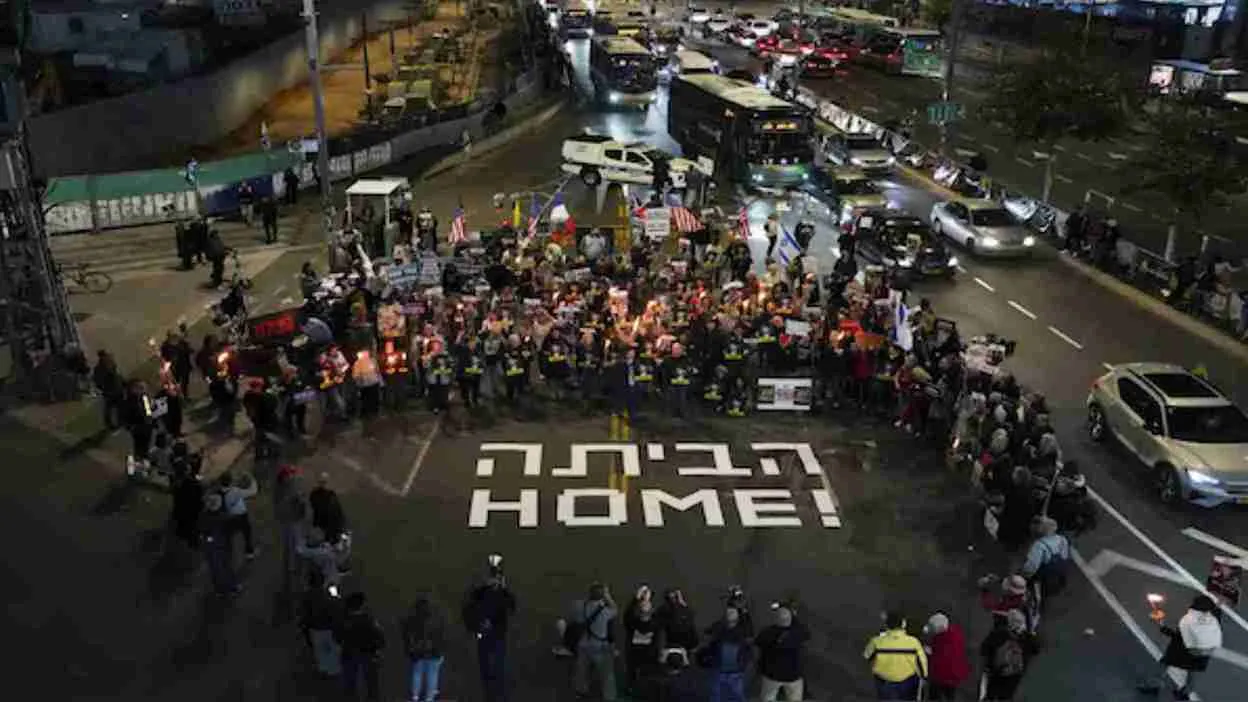In a pivotal moment during his farewell address from the Oval Office, outgoing US President Joe Biden announced the successful negotiation of a comprehensive Gaza ceasefire-for-hostages deal between Israel and Hamas. This historic agreement, months in the making, marks the end of over 15 months of intense conflict. Structured in three phases, the deal involves a full ceasefire, the withdrawal of Israeli forces from Gaza, and the exchange of hostages, including American citizens.
Details of the Ceasefire Agreement
President Biden emphasised the phased approach of the agreement, describing the process as one of the most challenging negotiations of his career.
Phase One: Ceasefire and Initial Hostage Release
- The first phase, set to last six weeks, implements a complete ceasefire.
- Israeli forces will withdraw from populated areas of Gaza, allowing displaced Palestinians to return to their neighbourhoods.
- An initial group of hostages, including women, the elderly, and the sick, will be released by Hamas in exchange for hundreds of Palestinian prisoners. Reports indicate that 33 hostages will be released, with three freed immediately.
- Humanitarian aid deliveries to Gaza will surge, with hundreds of trucks carrying essential supplies allowed in daily.
- The ceasefire will persist as long as negotiations for the subsequent phases continue.
Phase Two: Permanent End to Conflict
- This phase aims for a lasting peace, with the release of all remaining living hostages, including men, in exchange for additional Palestinian prisoners.
- Israeli forces will fully withdraw from Gaza, making the temporary ceasefire permanent.
- Detailed negotiations for this phase are set to begin after the 16th day of the ceasefire.
Phase Three: Reconstruction and Closure
- The final phase involves the reconstruction of Gaza, a process expected to take years.
- The bodies of any remaining hostages will be returned to their families.
- A comprehensive plan for rebuilding Gaza will be launched, addressing the widespread devastation caused by the conflict.
A Legacy of Diplomacy
President Biden highlighted the collaborative efforts behind the agreement, noting that the framework for the deal was proposed by his administration in May. He also acknowledged the contributions of his successor’s team in finalising the negotiations.
“This is one of the toughest negotiations I’ve ever experienced,” Biden stated, emphasising the importance of international cooperation in achieving this breakthrough. The President expressed hope that the deal would pave the way for long-term stability and peace in the region.
The agreement comes at a time when Gaza’s 2.3 million residents face immense challenges due to displacement, strikes, and ground conflict, offering a glimmer of hope for a brighter future.






















